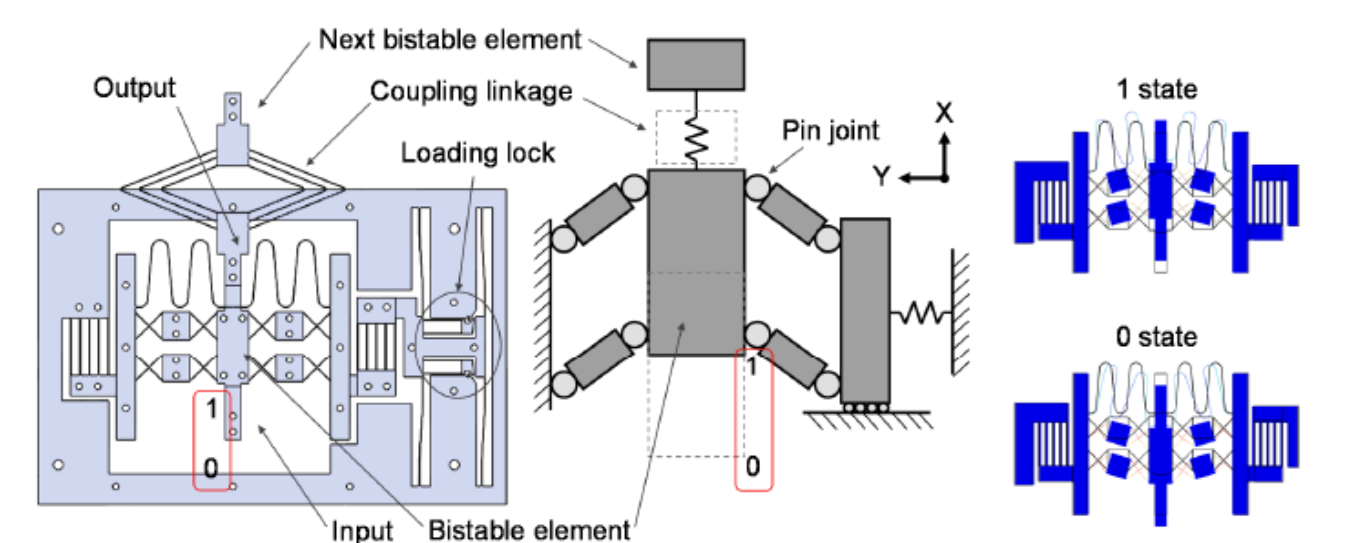There is a need for passive sensors that can observe the environment for an extended period of time, then reliably respond to a specific state-change event. While electronic sensors can accomplish these tasks, they tend to be large and require batteries, which eventually would run out of power. To address this drawback, LLNL researchers have developed passive sensors that could monitor environmental conditions and register changes as they occur, without the need for electrical power.
LLNL’s approach to designing logic gates uses heuristic as well as with the Freedom and Constraint Topologies (FACT) methods; these gates are then produced using existing additive manufacturing processes. The 10,122,365 and 10,678,293 patents describe how to fabricate the gates; the 10,855,259 patent describes how the signals are propagated; and the 11,604,489 patent describes how the gates can carry out the logical AND operator.
- Logic circuits with little or no electrical power source
- Negligible EM signature
- Long-term monitoring sensors in environments destructive to electronics
- Passive tags that confirm that a tagged item is in fact the original item, or if the item has moved/tampered
- Non-emitting sensors and computer systems that are difficult to detect
Current stage of technology development: TRL 2
LLNL has patent(s) on this invention:
- U.S. Patent No. 10,122,365 System and Method for Flexure-Based Microstructural Logic Gates published 11/6/2018
- U.S. Patent No. 10,678,293 System for Mechanical Logic Based on Additively Manufacturable Micro-mechanical Logic Gates published 6/9/2020
- U.S. Patent No. 10,855,259 Systems and Methods for Micromechanical Displacement-Based Logic Circuits published 12/1/2020
- U.S. Patent No. 11,604,489 System and Method for Micromechanical Logical AND Gate published 3/14/2023


